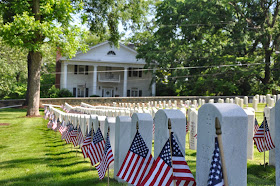My grandfather and his contemporaries -- whether immigrants in the boroughs or African Americans in Harlem -- would have enjoyed the Shake. Yes my grandfather would be thrilled by the old school shakes made from Blue Marble ice cream and organic milk from New York Fresh Milk. He would also be shocked to hear me proclaim the new age vegan burger the best vegetarian rendition this meat eater has ever had. He would have been delighted to see longtime Harlem resident Dennis Decker’s design of the building, at the corner of Lenox Avenue and West 124th Street. It has “restored” original features of a (nonexistent) 1800s dry goods store turned 1940s diner. In essence, it is constructed as an “original” Harlem hangout, and is abuzz as a contemporary one within yards of the Apollo Theater.
Owner Jelena Pasic researched the property ownership lineage and discovered that in the 1940s the space was in fact a restaurant. This inspired her to search for old photos at the main branch of the New York Public Library. The cream and green vinyl booths and formica seating are homage to the original restaurant. Hidden beneath a drop ceiling Pasic and Decker found some eight layers. Their archaeological excavation also yielded several layers of unglazed octagonal white and black tile.

Both the interiors and exteriors bespeak wit and cultural wisdom. There is a Wall of Fame celebrating famous customers with signed photos ranging from Janet Jackson to Bill Clinton and there is a “Miss Harlem Shake” photo along the back wall. Another wall has 300 vintage covers of the original JET magazine. There are also faux water leak worn tin ceilings and a two-story corner vertical 1970s style “BURGERS” sign.
Playfully merging cultural and culinary interests is a winning formula for Harlem Shake. It’s worth a trip uptown to visit this retro joint that evokes historical discovery and reinterpretation.

.jpg)
















